Sony Xperia L4 Review
Sony Xperia L4 Review
Sony’s latest sub-£170 smartphone clearly doesn’t want to cause a fuss
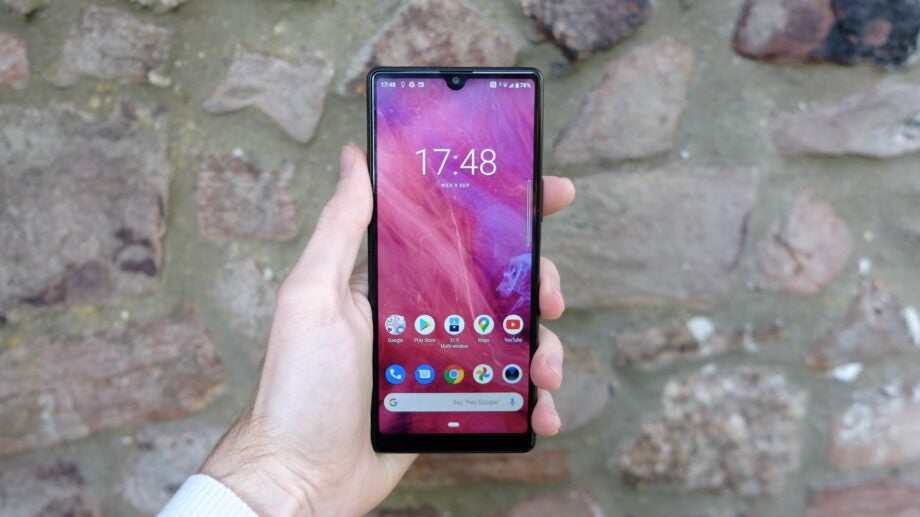
Verdict
If you like your phones cheap, solidly built, and stripped of all gimmicks, then the Sony Xperia L4 might appeal. Other than its stretched out 21:9 display, there’s virtually nothing noteworthy about it. Poor performance and so-so stamina mean we can’t get behind it with any degree of enthusiasm, but this is another fundamentally sound budget phone from Sony.
Pros
- Refreshingly chintz-free design
- Crisp, unadorned software
- Camera capable of decent shots in optimal lighting
Cons
- Deeply mediocre performance
- Slightly dim 720p display
- Underwhelming stamina
- Running Android 9
Key Specifications
- Review Price: £169
- Mediatek MT6762R Helio P22
- 3GB RAM
- 64GB storage
- Triple camera: 13MP wide, 5MP ultrawide, 2MP depth
- 8MP front camera
- 6.2-inch 720 x 1680 IPS LCD display
- Side-mounted fingerprint sensor
- 3580mAh battery
Sony made quite an impression earlier this year with the Sony Xperia 1 II, an extravagantly priced flagship phone with a fine Pro camera and a pin-sharp 4K display. Now the Sony Xperia L4 pares things back further, offering a super-widescreen experience in an ostensibly similar form factor (squinting required) for just £169.
History tells us that this most technically gifted of manufacturers doesn’t exactly shine with such a restrictive budget. Can the L4 hope to change that perception?
With an extremely modest spec sheet and an uninspired design, it’s hardly a major leap forward from the underwhelming Sony Xperia L3. But there’s something to be said for simply getting the basics right, with a modicum of taste, at this end of the market.
Design and screen – Boxy, functional design and a dim but tall display
The Sony Xperia L4 subscribes to the Sony design playbook, with a plain all-in-one plastic moulded rear that extends around the sides. Not for Sony the faux-glass back panel and faux-metal edges of some of its budget rivals.
It’s a deeply unfussy placeholder of a design that reminds of those generic unbranded phone designs that you see on low budget TV ads. But that gives it a certain low-key appeal, helped by this model’s no-nonsense shade of black.
The Xperia L4 sits nicely in the hand too, thanks to its subtly curved edges and narrow body. At 178g, it’s not too heavy either.
You get a proper USB-C port on the bottom edge, which isn’t a guarantee at this price point (hello Honor 9A). Here that modern port sits next to a rather gutless mono speaker, so it’s a good job there’s a 3.5mm headphone jack on the top.
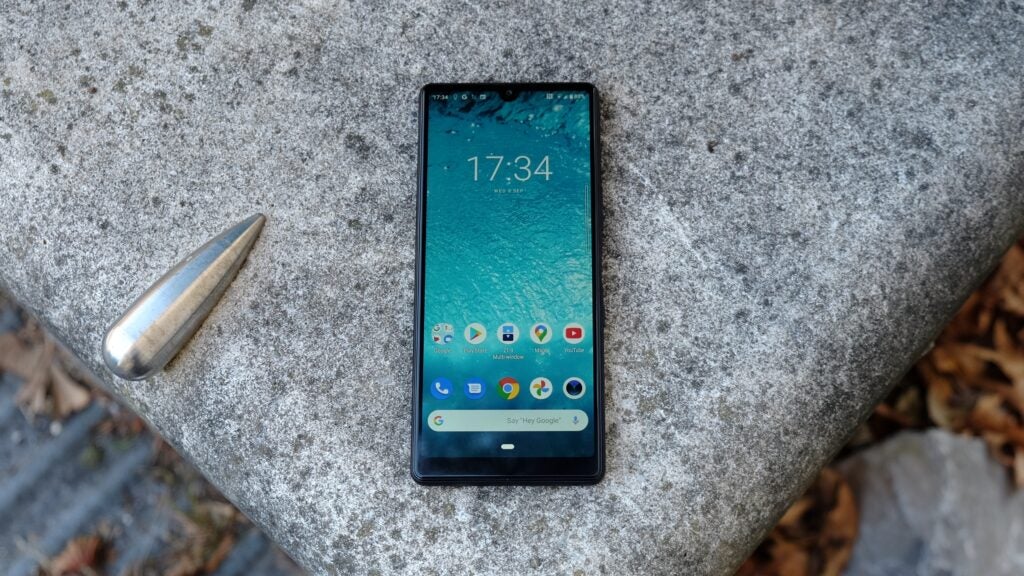
On the left edge of the phone you get SIM tray access without the need of a SIM tool, which is a bit of a Sony trademark. The opposite edge gives you a dedicated side-mounted fingerprint sensor, which sits in between the power and volume controls.
I would have preferred an integrated power button solution, like the Xperia 10 II, but it remains a clean and effective biometric system. It’s certainly better than the cheaper in-display solutions that are out there.
It’s slightly disappointing that Sony gave into market trends and adopted a notch. Sure, Sony’s phones have often been taller and less sleek than their rivals, but that at least gave them the advantage of being distinctive.
Sony has stretched out the Xperia L4 display’s screen to a 21:9 aspect ratio, compared to the Xperia L3’s more conventional 18:9. This makes for an ultra-widescreen proposition for certain cinematic content. Which would be more of a shouting point were it not for the presence of that teardrop notch.
Whatever flaws could be found elsewhere, you always knew that a Sony phone would give you a clean, unimpeded widescreen picture. Not so with the Xperia L4, although it could be argued that this matters a whole lot less given the cost-related compromises found elsewhere.
For one thing, this is an LCD display rather than the OLED of most pricier phones. Colours stand out less, and blacks are much greyer, as you’d expect. But in an ideal world the L4’s screen would have gotten a little brighter than it does. I found myself cranking it up to full most of the time. Still, the basic picture quality is pretty sound, even if you don’t get things like HDR support.
More problematic is the Xperia L4’s sub-standard resolution. At just 720 x 1680, it can’t even output Full HD content natively. 720p is where it’s at.
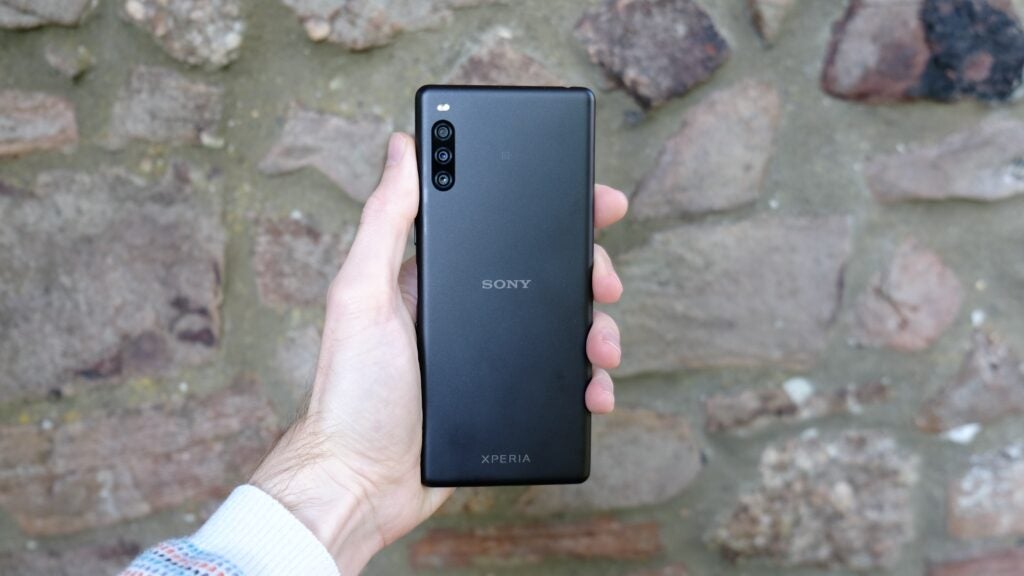
This isn’t too unusual at this end of the market. Recently we saw the Honor 9A with a very similar set-up, while budget titan the Moto G8 also comes in at 720p. This strikes us as a false turn for the wider budget market rather than Sony specifically, but it still manages to disappoint every time we see it.
Going back to that 21:9 aspect ratio for a second, it’s worth mentioning that relatively little of the video content most people consume will take advantage of the extra space. Most of it will leave thick black borders to either side.
Games certainly do benefit, however, and tend to feel a little more immersive. But as we’ll discuss next, the Xperia L4 doesn’t really have the power to make the most of this.
Performance – Poor performance regardless of the price
You should never set your sights too high when it comes to performance in a £170 phone. A phone’s choice of processor is extremely price-sensitive.
Nevertheless, it’s fair to say that the Sony Xperia L4 is not a top runner, even within its limited budget price bracket. The use of a Mediatek MT6762R Helio P22 pitches it below any low-end phone that runs a Snapdragon 6-series CPU.
We recently saw this in the Honor 9A, which runs on the exact same chip as the L4, and with the same 3GB of RAM. And the L4’s performance is similarly underwhelming, with a woeful Geekbench multicore score of 850 and a single core score of 145. The Moto G8 with its Snapdragon 665 scored 1321 and 311 respectively.
Zipping through home screens and opening apps isn’t excruciatingly slow here, as such. Everything moves along. But there are frequent stutters and pauses that serve as a constant reminder that you’re using a lesser product.
Gaming performance really drives this home. The new 1.0 version of PUBG Mobile takes ages to load and runs haltingly on the L4, even with the default graphical settings set down to virtually the lowest point. Elsewhere Grimvalor, which typically runs flawlessly on modest hardware, threw up the odd pause and stutter.
Even 2D fare like Juicy Realm struggled on the Xperia L4, asking me if I wanted to drop to low spec mode at the outset. When I didn’t, the frame rate proved to be pretty awful.
On the plus side, NFC has been included here, so you can use Google Pay for mobile payments. Not every cheap phone includes this, so props to Sony for the inclusion.
It’s also good to see that even extremely cheap phones are now getting a practical amount of storage. The 64GB on offer here isn’t particularly special any more, but that’s a good thing.
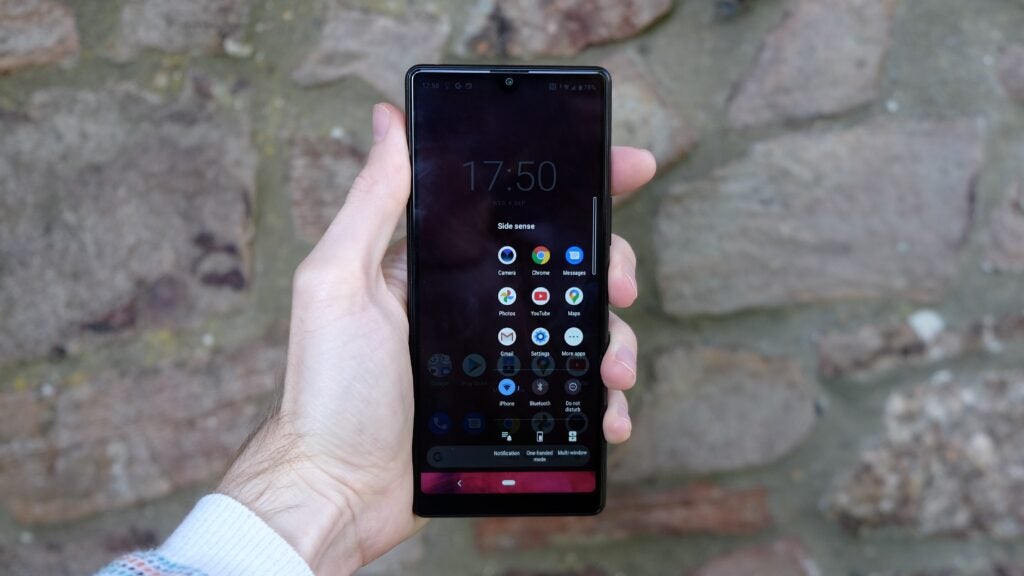
Camera – A decidedly budget camera with no surprises
Sony is something of a camera phone king maker, given that it provides the camera sensors for much of the smartphone industry. Yet its own cameras don’t often stand out from their peers.
The Sony Xperia L4 follows the same pattern. Its hardware is underwhelming, with a ‘triple’ camera set-up that’s really a double, while the software doesn’t really offer anything new or innovative.
The main sensor is a 13-megapixel f/2.0, backed by a 5-megapixel f/2.2 ultrawide. The third sensor is a 2-megapixel f/2.4 depth sensor, and so doesn’t take any shots of its own. There is no telephoto lens, so any zoom shots will be crops. In other words: don’t take zoom shots on the Sony Xperia L4.
Following suit, the camera UI is a modest, stripped back affair with precious few gimmicks or stand-out features. At this end of the market that can actually be seen as a bit of a relief.
While there’s a basic auto scene selector, I found that I needed to activate HDR mode for myself, which was a bit of a pain. The weedy limited camera would tend to wash out brighter areas and leave areas of shade looking rather murky, and a second pass with HDR initiated would invariably balance them up.
Barebones provision aside, I was quite surprised with the crispness of some of the shots I managed to take in ideal lighting. One street shot taken in Birmingham’s Chinatown captured all of the vibrant colours and details of the scene quite well.
Another couple of shots of a dog in front of some coloured balls really stood out for the detail in the dog’s fur and the grass. Zooming in on these wasn’t a good idea, of course, but the basic shot composition felt like it came from a slightly more expensive phone.
Outside of ‘ideal’ conditions though, the Xperia L4 struggles. There’s that aforementioned issue with dynamic range, and even with HDR activated shots can tend to overexpose.
Attempting to shoot in low light is a mistake, too. There’s a Night scene mode, but it doesn’t seem to employ the same multi-shot technique of the better examples on the market. The result is loads of noise and a fundamental lack of clarity.
Certain close up food shots I took struggled to keep the foreground elements in focus, meanwhile.
As so often with cheaper phones, the ultrawide sensor is a bit of a write off. Shots with this sensor are universally murky, blurry, and generally unpleasant to look at.
You get an 8-megapixel front camera, which is adequate for selfies provided you feed it plenty of light. Video capture, meanwhile, is an unremarkable 1080p and 30fps. But it’ll do at a push.
Software – Crisp, clean UI, if a little dated
With Android 11 just hitting the market, the Xperia L4’s used of Android 9 feels a little outdated.
That aside, Sony’s clean, relatively stripped back take on Android is comfortably in the top half of the table when it comes to custom UIs. It’s especially welcome at the lower end of the market, where tacky and inefficient software can exacerbate any hardware issues.
On the Sony Xperia L4, it feels like Sony’s unfussy software gives the phone’s limited specs vital breathing space. Everything’s where it should be and well-ordered, and the fonts and menus are clean and crisp.
It stands in stark contrast with the very similarly specced Honor 9A, which really suffers from clutter. That phone also struggled with a lack of Google apps and services, whereas the Sony Xperia L4 embraces them. Google Feed sits to the left of a home screen that features Google Maps, Photos, Messages, youTube, the Chrome browser and the Play Store, as well as an additional Google folder.
Sony doesn’t go too heavy with its own apps, but there’s a 21:9 Multi-window app on the main home screen, which enables you to run multiple apps side by side or stacked one on top of the other. It worked well on the Sony Xperia 1 II and Sony Xperia 10 II, but the Xperia L4 has neither the snappy performance nor a sufficiently high resolution display to really make it sing.
One criticism I do have about Sony’s software is the number of updates I received. Three major updates feels like too many in a space of less than a week.
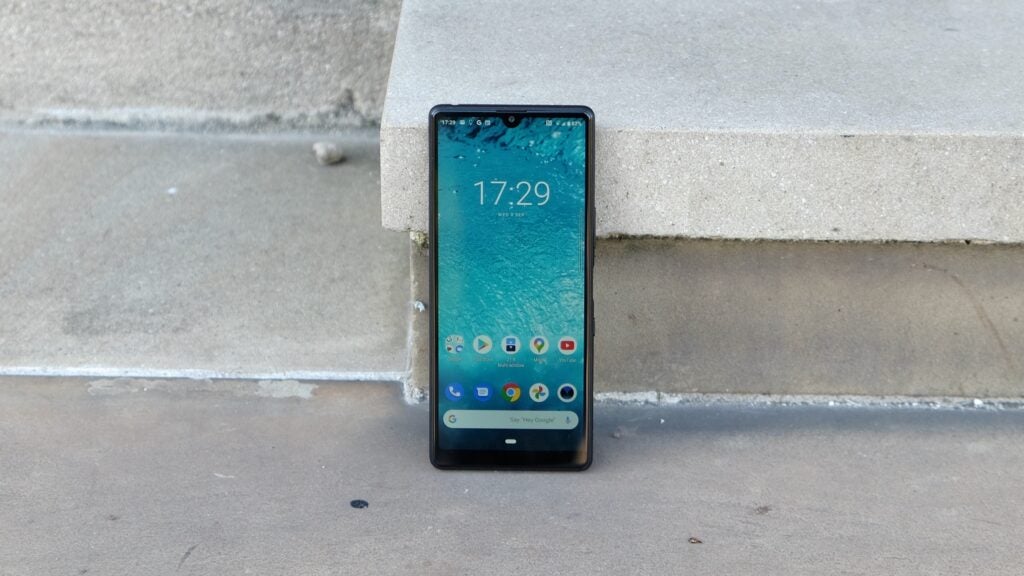
Battery Life – Not the best stamina for the price, but adequate
The Sony Xperia L4 has a 3580mAh battery, which is a pretty decent size for a budget phone. No, it’s not as big as the 5000mAh monstrosities found in the Honor 9A, the Realme 5, and the Moto G8 Power.
But those are exceptionally large. The Xperia L4’s battery is only fractionally smaller than that of its big brother, the Sony Xperia 10 II, which sports a more power-hungry 1080p OLED display.
What this all amounts to is a phone that will get you through a full day of moderate usage, and not much more. It’s certainly not a full two dayer like the aforementioned Honor 9A.
Media tends to hit it fairly hard too. We did our usual test of running a Netflix video at full screen brightness for an hour, after which the Xperia L4 had lost 12% of its charge.
By comparison, the Honor 9A lost 8% of a charge in this test, and the Realme 5 lost 9%. Not a particularly great result, especially when you consider how lightly that dim 720p display must be going on the battery.
There’s no fast charging with the Sony Xperia L4 either, with a scant 7.5W charger bundled in.
Should you buy the Sony Xperia L4?
The Sony Xperia L4 is a decent low-key pick if you’re shopping on a strict budget of £170 or less. However, it’s far from making an appearance in our best phone or best cheap phone lists.
Its design will turn neither heads nor stomachs, which is precisely what some people will be after. Its unassuming looks are accompanied by an adequate display and super clean software, which combines to produce a relatively hassle-free day to day experience.
Relatively, but not entirely. The L4 is not a very good performer, and its camera proves to be solid rather than spectacular. You can certainly get better stamina for your money, meanwhile.
How we test phones
We test every mobile phone we review thoroughly. We use industry standard tests to compare features properly and we use the phone as our main device over the review period. We’ll always tell you what we find and we never, ever, accept money to review a product.


